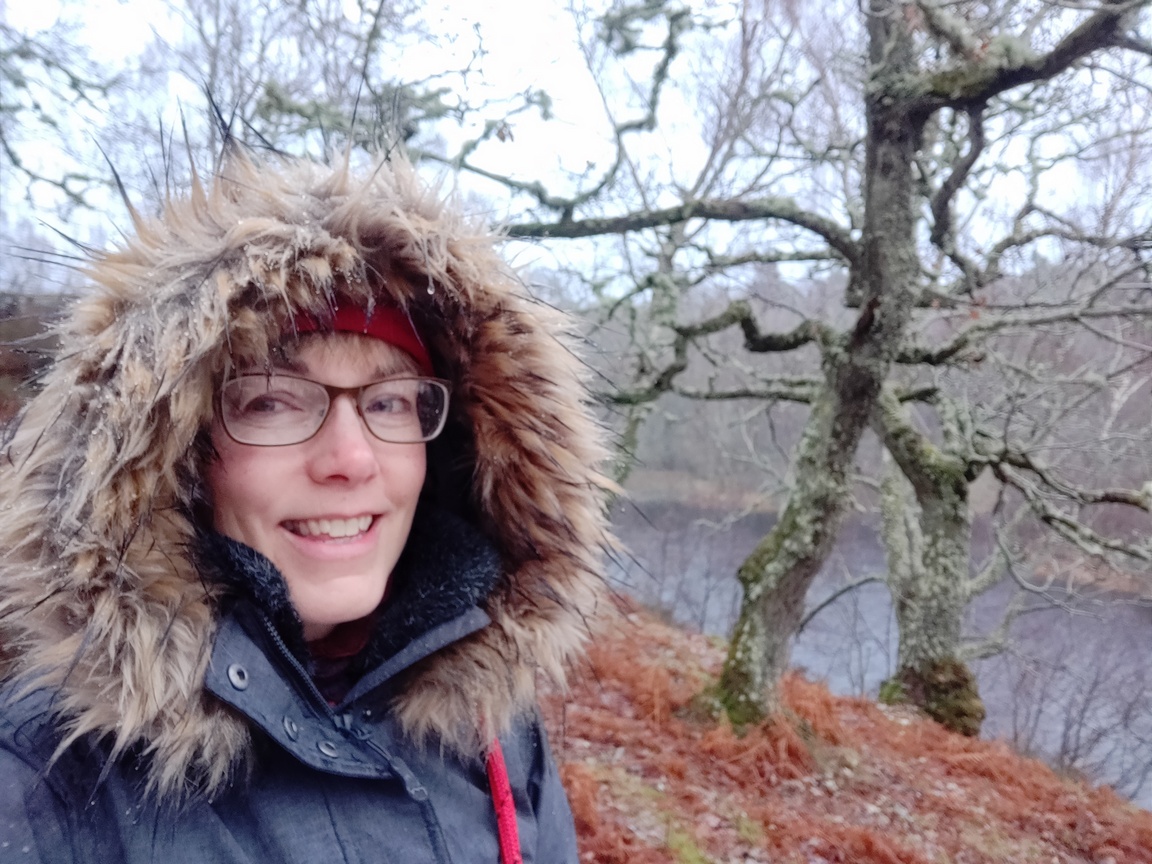Latest
Posted on 22/02/19 in Landscape and Nature, Walking
Wonder
“Can I throw her stick?” cries my godson J, careering down the path ahead of me with our golden retriever, Sileas, who got her Gaelic name from her origin family on the Outer Hebridean island of Harris and her love of every living person from God knows where, but seemingly God himself. She certainly never so much as growled when J, as a baby, climbed all over her and poked his fingers in her mouth, ears, eyes and nose. And she certainly has no desire to resist him now, aged five and the perfect playmate. Kitted out in salopettes, boots, coat, hat and gloves, he looks like a garden gnome on steroids and together they have enough energy to power the village.
It’s cold today with a dusting of snow on the ground and that uncertain winter weather when the wind could turn on a penny and bring more snow, or just sleet, or rain. With a whoop, J hurls the stick for Sileas, who catapults off down the steep river bank to fossick in the bracken and bound back up, triumphant. Never tiring of the game, she drops the stick back at his feet and he tosses again. A retriever to the core, if her stick should snap in half, she spends the rest of the expedition re-uniting the two pieces and carrying both in her mouth with the vigilance of a mother rounding up twins. The expression ‘dogged’ was not coined for nothing.
J soon drops back to me and sets up the fairly constant chatter I remember from my own sons at that age. He points out the giant fungi lying upended on the ground and asks how it got there. We inspect the host tree beside it and the raw mark where the fungi once held tight, alongside the other UFO-like growths. I can’t shed light on this mushroom’s crash landing but that doesn’t stop J plying me with more questions and cheerful commentary about everything he sees. The patterns of the lichens; the leaves that stay and the leaves that go. Our pace gets ever slower. What are the birds on the river? He wants to know. Why did they fly off? Will they come back?
A light snow starts to fall and I realise he’s stopped. Turning back, I see him standing there, head tilted back, glasses fogging and tongue sticking out, catching the flakes. I copy him and laugh at that magical feeling of tickly cold melting on my tongue. When was the last time I did that? Maybe when my own ones were little, and I remember that stage with a wistful pang. It used to take ages to get anywhere and I could find it so frustrating, until the moments when I allowed myself to slow down and see the world through their eyes. And then they showed me things I hadn’t noticed – or hadn’t noticed properly, because I’d stopped paying attention – things like the patterns inside a snowdrop, or the minute march of ants.
I have travelled this path above the river Spey hundreds of times, as it’s one of my favourite routes for the daily dog walk, and though it has never bored me, today I have discovered it again with a renewed joy. It chimes with my reflections on pilgrimage. We often think of pilgrimage as a new route to a new destination, but it doesn’t need to be. The ordinary and everyday tracks of our lives can be full of meaning and discovery, if only we slow down and open ourselves. Take a child as your guide.
There is a story of a primary school teacher who assigned her class the task of finding out the Seven Great Wonders of the World. One child returned with these words on his paper:
To see, to hear, to touch, to taste, to smell, to move, to breathe.
With J this morning, all Seven Wonders were mine.





